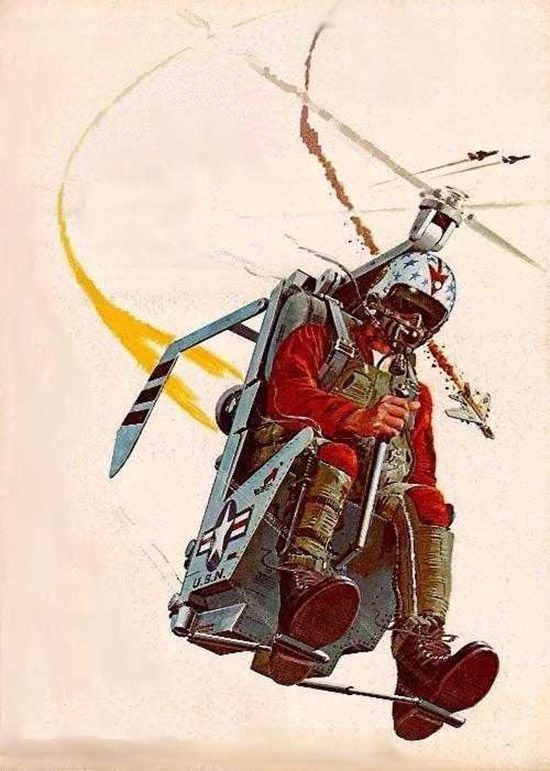Originally Posted by
Asturias56
They thought up a lot of bright ideas then - but retrofitting a seat with an engine, blades, electronics that could survive an ejection ......................... maybe in a B-52 or a Hercules.................
Here you go, the patents
https://patents.google.com/patent/US3662978A/en
https://patents.google.com/patent/US3042347
http://airsoc.com/articles/view/id/5...-ejection-seat
Flying a jet fighter can be sometimes tricky, and in some cases, you may need to eject in order to save your life. The ejection seat technique dates back from 1945, and has since been improved to fit all modern jet fighters. But did you know that at some point, they thought about a flying ejection seat ? During the Vietnam War, the US Navy lost over 500 aircraft in combat, as a result of which nearly 200 aircrew became prisoners of war. Alongside them, the US Air Force suffered three times as many aircraft fosses. In every case there were aircrew who had either been killed, captured or were in need of rescue. And while rescuing aircrew from behind enemy lines was given top priority, the challenge was considerable. Dedicated USAF squadrons flying Sikorsky HH-3 ‘Jolly Green Giant’ helicopters, supported by heavily armed, piston-engined Douglas A-1 Skyraider attack aircraft, flew dangerous extraction missions, which, of course, put even greater numbers of aircrew at risk. This prompted the navy and air force to ask, ‘What if downed aircrew had the means to fly themselves back into friendly territory?’ Three different aircraft companies accepted the challenge of coming up with an answer. The results were worthy of a Transformers movie: ejection seats that, on firing their occupant out of a stricken aircraft, unfolded, extended and locked themselves into mini-flying machines. Bell Aerosystems suggested a jet-powered hang-glider that suspended the pilot, face down and still strapped to his seat, beneath it. Fairchild-Hiller also suggested a glider, but theirs was a sort of pop-up machine made of cloth stretched over a spring-loaded metal frame. My favourite is the gyrocopter designed by Kaman Corps. On ejecting, a two-bladed rotor unfurled above the pilot’s head, while a tail and a micro turbofan jet flicked up behind him. And the name given to this invention? Stowable Aircrew Vehicle Escape Roto-seat - or SAVER for short. How practical any of these ideas really were for aircrew disorientated and sometimes injured by the violent act of ejection itself remains a matter for conjecture as none, sadly, made it into service. But that they were dreamt up at all merits a hat tip to the creativity and ingenuity of aircraft designers - and to the importance that the USA attaches to bringing its soldiers home.
